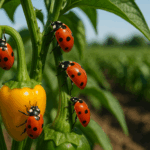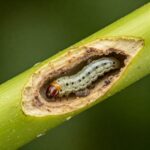Introduction: Small Predators with a Big Impact
Ladybugs, also known as ladybirds or lady beetles, are not just visually appealing insects—they play a key role as biological control agents in orchards, gardens, and agricultural crops. Their ability to feed on pest insects makes them a valuable natural resource for both professional farmers and ecological gardening enthusiasts.
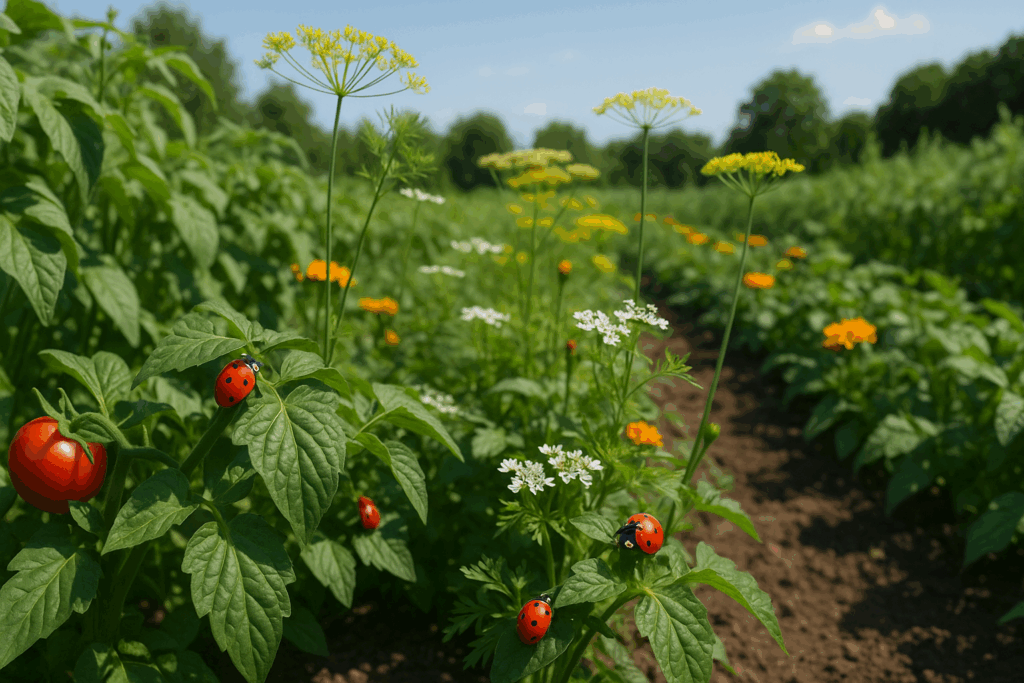
This article explains how ladybugs act as biological controllers, which species are most effective, and how to encourage their presence to reduce pesticide dependence.
What Is a Biological Controller?
A biological controller is any organism that regulates the population of another—in this case, an insect that preys on or parasitizes an agricultural pest. Ladybugs belong to the group of predators, as they actively feed on harmful insects, especially during their larval and adult stages.
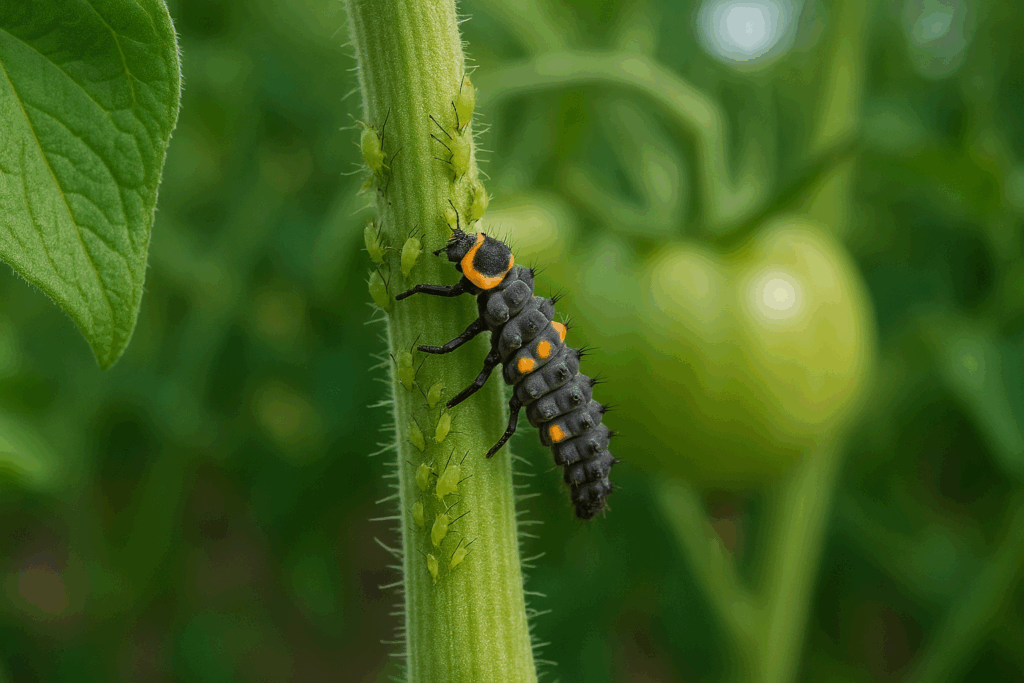
The use of biological controllers is a fundamental tool within Integrated Pest Management (IPM), as it helps reduce pest pressure naturally and sustainably.
Pests Controlled by Ladybugs
Ladybugs are particularly effective against soft-bodied pests that reproduce quickly. Among the main pests they combat are:
- Aphids (Aphididae): one of their main food sources; each larva can consume up to 400 aphids.
- Whiteflies (Bemisia tabaci): they feed on both eggs and nymphs.
- Mealybugs (Pseudococcidae): certain species such as Cryptolaemus montrouzieri are specialized in preying on them.
- Phytophagous mites: although to a lesser extent, some ladybugs also consume them.
This range of prey makes them a very useful option in a wide variety of crops, from vegetables to fruit trees.
How to Encourage the Presence of Ladybugs in Your Crop
Encouraging the presence of ladybugs requires understanding their ecological needs and reducing barriers to their establishment in the field. Some strategies include:
Recommended Agronomic Practices
- Planting auxiliary flowering species such as dill, fennel, basil, or cilantro, which provide nectar and pollen.
- Maintaining strips of natural vegetation or hedges around the crop to serve as shelter.
- Avoiding broad-spectrum pesticides, especially pyrethroids and neonicotinoids, which affect both pests and beneficial insects.
- Releasing ladybugs at strategic times, such as at the first signs of infestation, so they can adapt to the environment and act before the pest spreads.
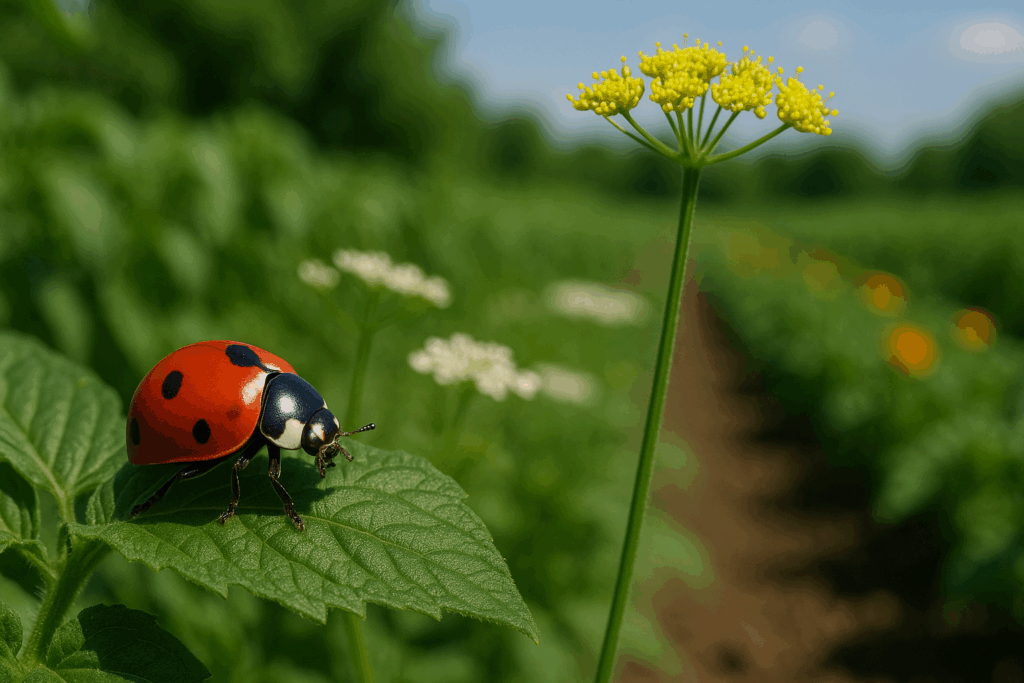
Ideal Times for Release
- Temperatures between 20 and 30 °C.
- Times of low solar radiation (dawn or dusk).
- Confirmed presence of pests that serve as food.
Advantages of Using Ladybugs as a Control Method
The use of ladybugs provides agronomic, economic, and ecological benefits. Below are some of the most relevant advantages:
- They reduce the need for chemical applications, lowering costs and residues in the final product.
- They do not cause resistance in pests, unlike insecticides.
- They can coexist with other beneficial agents, forming a more robust control system.
- They improve consumer perception, especially in markets that value organic or residue-free production.
For export crops or organic certification, ladybugs are an indispensable tool within phytosanitary and environmental protocols.
 AgronoBlog – Agriculture Blog
AgronoBlog – Agriculture Blog 